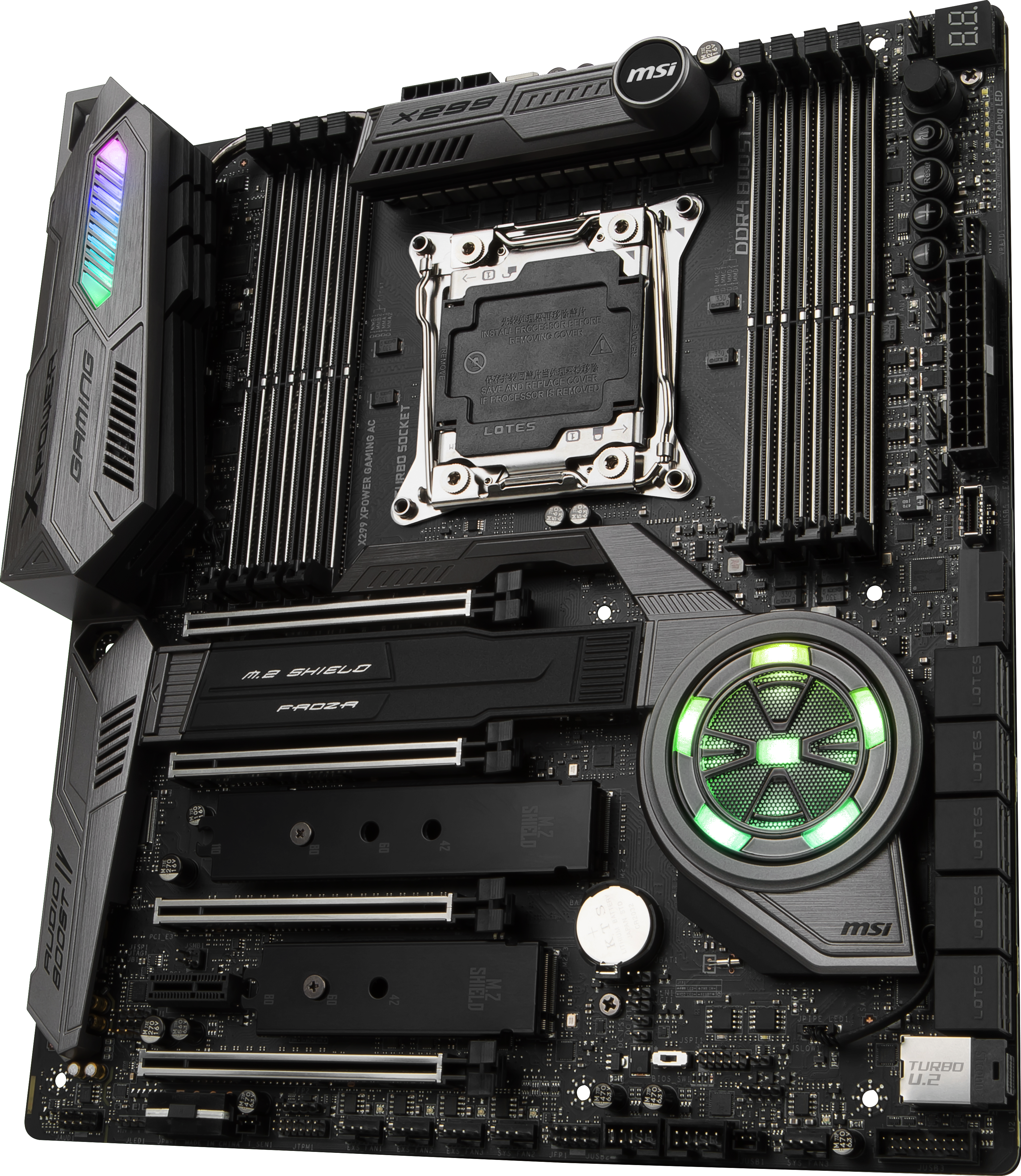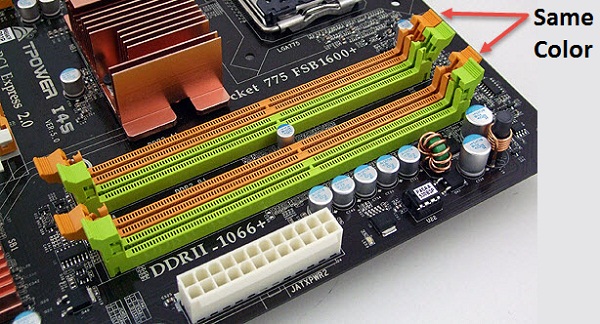
A memory slot, memory socket, or RAM slot allows RAM (computer memory) to be inserted into the computer. Most motherboards have two to four memory slots, which determine the type of RAM used with the computer. The most common RAM types are SDRAM and DDR for desktop computers and SODIMM for laptop computers, each having various types and speeds. The picture below is an example of what memory slots may look like inside a desktop computer. In this picture, there are three open and available slots for three memory sticks.
Why Are Dimm Slots Different Colors Like
They even have a picture of the color-coded memory slots. Also: 'If the motherboard has two pairs of differently colored DIMM sockets (the colors indicate which bank they belong to, bank 0 or bank 1), then one can place a matched pair of memory modules in bank 0, but a different-capacity pair of modules in bank 1, as long as they are of the. Each channel has DIMM 0 and DIMM 1. Manual says something to effect: place MATCHING ram modules in Channel A DIMM 0 and Channel B DIMM 0. There is also entry for when using nonmatching ram modules. The manual tells me what to install where. Do I need colors to follow instructions in the manual? Do I need the actual slots color coded? Colors on the dimm slots are usually there to show the two channels. Generally, the first two slots is one channel and the next two is the other channel. Hartofalyon, Jan 1, 2006 #2. Or, if you bought a different Dell Config (for example, one using 4x4GB in all 4 slots), you could remove two of the modules and replace them with higher capacity 8GB modules to get more memory (for example, replacing 2 of the 4GB modules with 8GB modules to get 24GB total using 2x4GB + 2x8GB). It does not matter until you tweak. There are a few things to consider. Cost, reliability, maintenance when it does fail, overclocking. If you have quad channel memory you will want 4 or 8, and there will be no difference in memory speed.
Why Are Dimm Slots Different Colors Called

Mohegan casino pa. When buying a new computer or motherboard, pay close attention to the types of RAM the memory slots can accept. Make sure you know exactly the type of RAM to buy for your computer. It is also important to note how many available memory slots are available in your computer. It is not uncommon for computers to have all memory slots occupied. If all slots are full and you want to upgrade the computer memory, you need to remove some or all of the existing memory.
Why are the memory slots different colors?
When a motherboard has different colored memory slots, it indicates the memory slots are dual-channel, and pairs of memory should be installed on the same channel (color). For example, a motherboard could have two yellow and two black memory slots. The yellow memory slots could indicate Channel A and Channel B could be indicated by the black slots. If you were only installing two memory sticks, you'd want to install both of them in Channel A (yellow slots) for optimal performance.


A memory slot, memory socket, or RAM slot allows RAM (computer memory) to be inserted into the computer. Most motherboards have two to four memory slots, which determine the type of RAM used with the computer. The most common RAM types are SDRAM and DDR for desktop computers and SODIMM for laptop computers, each having various types and speeds. The picture below is an example of what memory slots may look like inside a desktop computer. In this picture, there are three open and available slots for three memory sticks.
Why Are Dimm Slots Different Colors Like
They even have a picture of the color-coded memory slots. Also: 'If the motherboard has two pairs of differently colored DIMM sockets (the colors indicate which bank they belong to, bank 0 or bank 1), then one can place a matched pair of memory modules in bank 0, but a different-capacity pair of modules in bank 1, as long as they are of the. Each channel has DIMM 0 and DIMM 1. Manual says something to effect: place MATCHING ram modules in Channel A DIMM 0 and Channel B DIMM 0. There is also entry for when using nonmatching ram modules. The manual tells me what to install where. Do I need colors to follow instructions in the manual? Do I need the actual slots color coded? Colors on the dimm slots are usually there to show the two channels. Generally, the first two slots is one channel and the next two is the other channel. Hartofalyon, Jan 1, 2006 #2. Or, if you bought a different Dell Config (for example, one using 4x4GB in all 4 slots), you could remove two of the modules and replace them with higher capacity 8GB modules to get more memory (for example, replacing 2 of the 4GB modules with 8GB modules to get 24GB total using 2x4GB + 2x8GB). It does not matter until you tweak. There are a few things to consider. Cost, reliability, maintenance when it does fail, overclocking. If you have quad channel memory you will want 4 or 8, and there will be no difference in memory speed.
Why Are Dimm Slots Different Colors Called
Mohegan casino pa. When buying a new computer or motherboard, pay close attention to the types of RAM the memory slots can accept. Make sure you know exactly the type of RAM to buy for your computer. It is also important to note how many available memory slots are available in your computer. It is not uncommon for computers to have all memory slots occupied. If all slots are full and you want to upgrade the computer memory, you need to remove some or all of the existing memory.
Why are the memory slots different colors?
When a motherboard has different colored memory slots, it indicates the memory slots are dual-channel, and pairs of memory should be installed on the same channel (color). For example, a motherboard could have two yellow and two black memory slots. The yellow memory slots could indicate Channel A and Channel B could be indicated by the black slots. If you were only installing two memory sticks, you'd want to install both of them in Channel A (yellow slots) for optimal performance.
Related pages
Memory module, Memory terms